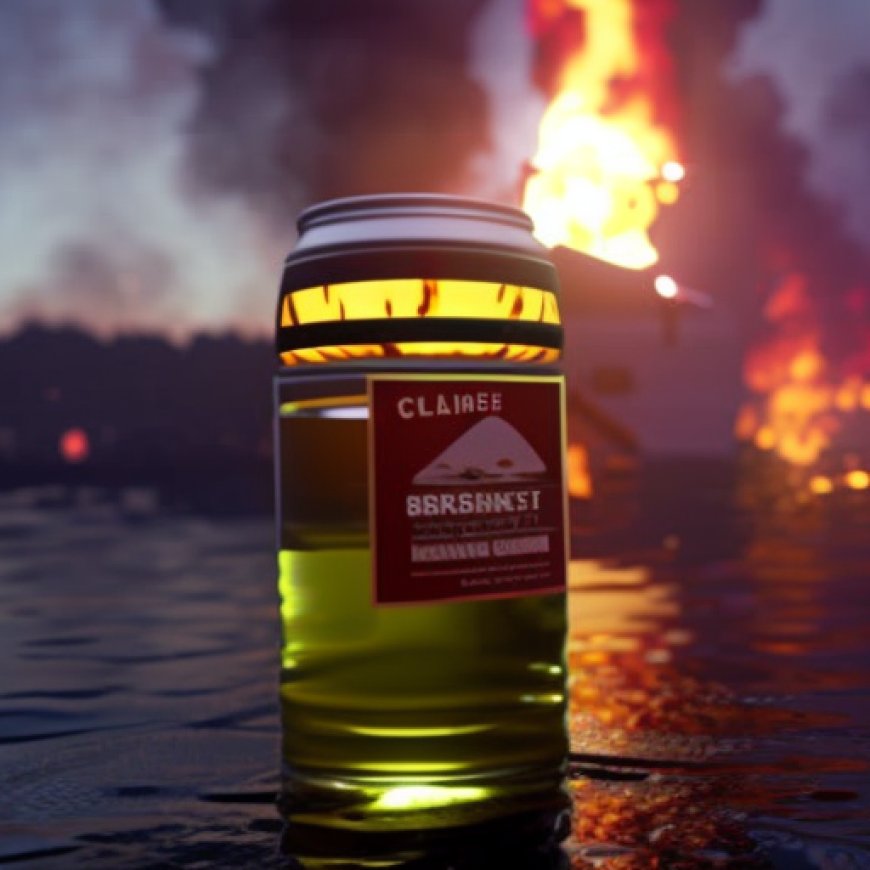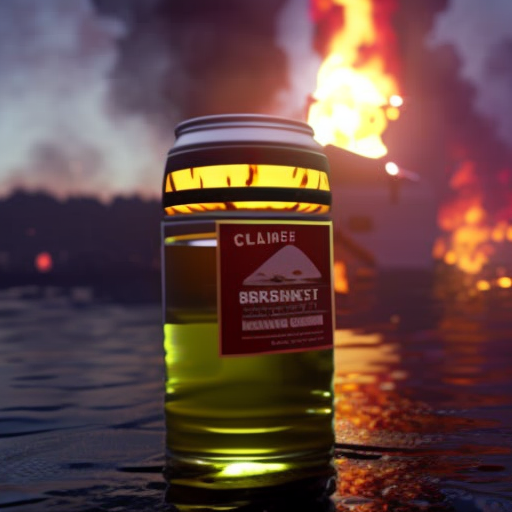Brewer set to donate clean drinking water to local fire departments as heat rises
Brewer set to donate clean drinking water to local fire departments as heat rises WIBW


Donation of Clean Drinking Water to Kansas Fire Departments
/cloudfront-us-east-1.images.arcpublishing.com/gray/4IZWOB3IT5I5LCVPQGUM6TIGRA.png)
TOPEKA, Kan. (WIBW) – A nationally recognized brewer is set to donate thousands of cans of clean drinking water to local fire departments across Kansas as heat continues to rise.
Anheuser-Busch announced on Tuesday, July 19, that wholesaler partners have teamed up with the National Volunteer Fire Council for the fifth year in a row to donate emergency drinking water to local departments. More than 80,000 cans are slated for donation to 35 fire departments in the Sunflower State.
Officials noted that firefighters and first responders rely on clean drinking water in times of need, however, volunteer fire departments often lack the budget and resources to supply water. The donations are meant to deliver on the critical need as well s support communities where the company’s customers and employees live and work.
“We thank Anheuser-Busch, NVFC and our local wholesalers who have delivered over 80,000 cans of emergency drinking water to local fire departments across Kansas this summer,” said Gary Clark, Chief of the Mitchell County Fire District. “Battling wildfires in rural and hard-to-reach areas of the state requires a steady supply of drinking water to keep our responders hydrated, and we’re grateful for the support of our community partners who have helped make this possible.”
Now in the partnership’s fifth year, the company said it has expanded to provide 2.5 million cans – more than ever before – to more than 600 volunteer departments in 48 states. The goal is to reach more than 1,000 volunteer fire departments before the end of 2023. The expansion highlights the evolution in the brewer’s 30-year commitment to disaster relief and a deep appreciation for first responders.
“Showing up for our communities and first responders has long been part of Anheuser Busch’s legacy – that’s who we are. We’re proud to continue building on that tradition by working with our wholesaler partners and NVFC to support our neighbors, friends, and families,” said Cesar Vargas, Chief External Affairs Officer at Anheuser-Busch.
Donation Recipients in Kansas
- Bellmore Fire Department
- Decatur Co. Fire Department
- Elk Co. Rural Fire Department
- Hanston Fire Department
- Mitchell Co. Fire District
“Emergency drinking water is critical for firefighters’ safety and ability to respond to crises at home each year,” said NVFC Chair Steve Hirsch. “We appreciate Anheuser-Busch’s increased commitment to supplying our nation’s fire service with this much-needed resource and for their continued partnership in keeping our communities safe.”
Since 2019, Busch said its national network of independent wholesalers – including partners such as Eagle Beverage Co., Flint Hills Beverage, O’Malley Beverage and Strathman Sales – have partnered with NVFC to donate more than 6.4 million cans to more than 960 departments in 49 states to support disaster response needs.
“It’s a privilege to be able to support the members of Thomas County Rural Fire Department #5, Phillips County Rural District #1, Plainville Fire Department, Graham County Fire Department, Decatur County Fire Department, Rawlins County Rural Fire District #2, McPherson Rural Fire Department #8, Mitchell County Fire District #3, Grant Township Fire District, Smith Center Volunteer Fire Department and Barnard Rural Fire Department by delivering emergency drinking water to their stations,” said Matt Pestinger, Owner of Pestinger Distributing. “Firefighters and EMS are often the first to respond in times of crisis, and we’re grateful to the men and women who stand ready to assist their neighbors at all hours of the day.”
The brewer noted that the emergency drinking water is sourced from its breweries in Cartersville, Ga., and Fort Collins, Colo., which periodically pause beer production to can clean, safe drinking water. Since the creation of the program in 1988, the company has donated more than 90 million cans of clean drinking water to communities affected by natural disasters and other crises across the U.S.
Copyright 2023 WIBW. All rights reserved.
SDGs, Targets, and Indicators
-
SDG 6: Clean Water and Sanitation
- Target 6.1: By 2030, achieve universal and equitable access to safe and affordable drinking water for all.
- Indicator 6.1.1: Proportion of population using safely managed drinking water services.
The article discusses Anheuser-Busch’s donation of clean drinking water to local fire departments in Kansas. This aligns with SDG 6, which aims to ensure access to clean water and sanitation for all. The specific target under SDG 6 that can be identified is Target 6.1, which focuses on achieving universal access to safe and affordable drinking water. The indicator that can be used to measure progress towards this target is Indicator 6.1.1, which measures the proportion of the population using safely managed drinking water services.
-
SDG 11: Sustainable Cities and Communities
- Target 11.5: By 2030, significantly reduce the number of deaths and the number of people affected and substantially decrease the direct economic losses relative to global gross domestic product caused by disasters, including water-related disasters, with a focus on protecting the poor and people in vulnerable situations.
- Indicator 11.5.1: Number of deaths, missing persons, and directly affected persons attributed to disasters per 100,000 population.
The article mentions that the donations of clean drinking water are meant to support communities where Anheuser-Busch’s customers and employees live and work. This aligns with SDG 11, which aims to create sustainable cities and communities. The specific target under SDG 11 that can be identified is Target 11.5, which focuses on reducing the number of deaths and people affected by disasters. The indicator that can be used to measure progress towards this target is Indicator 11.5.1, which measures the number of deaths, missing persons, and directly affected persons attributed to disasters per 100,000 population.
SDGs, Targets, and Indicators
| SDGs | Targets | Indicators |
|---|---|---|
| SDG 6: Clean Water and Sanitation | Target 6.1: By 2030, achieve universal and equitable access to safe and affordable drinking water for all. | Indicator 6.1.1: Proportion of population using safely managed drinking water services. |
| SDG 11: Sustainable Cities and Communities | Target 11.5: By 2030, significantly reduce the number of deaths and the number of people affected and substantially decrease the direct economic losses relative to global gross domestic product caused by disasters, including water-related disasters, with a focus on protecting the poor and people in vulnerable situations. | Indicator 11.5.1: Number of deaths, missing persons, and directly affected persons attributed to disasters per 100,000 population. |
Behold! This splendid article springs forth from the wellspring of knowledge, shaped by a wondrous proprietary AI technology that delved into a vast ocean of data, illuminating the path towards the Sustainable Development Goals. Remember that all rights are reserved by SDG Investors LLC, empowering us to champion progress together.
Source: wibw.com

Join us, as fellow seekers of change, on a transformative journey at https://sdgtalks.ai/welcome, where you can become a member and actively contribute to shaping a brighter future.







